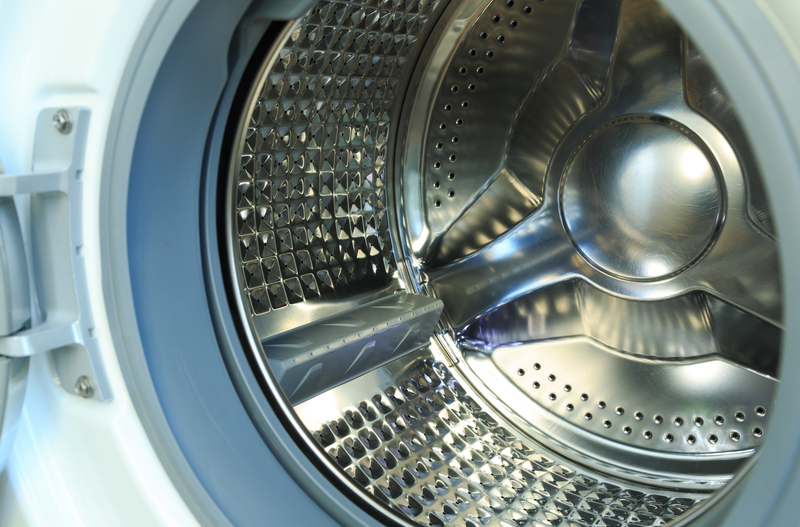Cleaning Misbeliefs Unmasked
Posted on 10/10/2025
Cleaning Misbeliefs Unmasked: Separating Fact from Fiction
In an era where information is at our fingertips, it's ironic that misconceptions about cleaning still abound. From household habits handed down from generation to generation to viral social media cleaning hacks, it's easy to see why people are often left perplexed when it comes to cleaning efficiently and effectively. This article aims to unmask some of the most prevalent cleaning misbeliefs, guiding you towards a cleaner, healthier home.
Misbelief 1: Bleach is the Best Cleaner
One of the most common misconceptions is that bleach is the ultimate cleaning agent. While bleach is excellent for disinfecting and removing stains, it's not the best choice for cleaning surfaces. Bleach is a powerful disinfectant but lacks surfactants, which are substances that lift dirt and grime off surfaces. For actual cleaning, a general-purpose cleaner that contains surfactants is more effective. Additionally, bleach is highly corrosive and can damage certain surfaces like grout and stainless steel.

Misbelief 2: More Product Equals Better Cleaning
Using more cleaning product than recommended doesn't necessarily result in cleaner surfaces. In fact, excess product can leave behind a residue that attracts more dirt and grime. Manufacturers spend considerable time and resources determining the optimal amount of product needed for effective cleaning, so it's best to follow their guidelines. Overusing products can also be harmful to your health and the environment.
Misbelief 3: Vinegar Cleans Everything
Vinegar is touted as a universal cleaner in many DIY cleaning hacks, but it's not a one-size-fits-all solution. While vinegar is acidic and can tackle limescale and mineral deposits effectively, it is not suitable for all surfaces. Using vinegar on natural stone surfaces like granite and marble can cause etching. Furthermore, vinegar should not be used on waxed furniture or certain electronic screens as it can damage them over time. Understanding when and where to use vinegar is crucial for effective cleaning.
Misbelief 4: Disinfecting and Cleaning are the Same
Cleaning and disinfecting are often used interchangeably, but they serve different purposes. Cleaning involves the removal of dirt, grime, and impurities from surfaces, often using soap and water. Disinfecting, on the other hand, involves using chemicals to kill germs on surfaces. Effective routine cleaning should involve both steps: first, clean the surface to remove dirt and then disinfect to kill germs. Skipping the cleaning step can reduce the effectiveness of disinfectants.
Misbelief 5: Myth of the Carpet "Sanitizer" Spray
Many believe that simply spraying a carpet with a sanitizer is enough to keep it clean. While these sprays can kill bacteria on the surface, they don't remove dirt, allergens, and grime embedded within the fibers. To properly clean a carpet, it should be vacuumed regularly and periodically deep-cleaned through steam cleaning or professional services. Carpet sanitizers can be used as part of the cleaning process but are not a substitute for thorough cleaning.
Misbelief 6: Air Fresheners Clean the Air
A common belief is that air fresheners clean and purify the air in addition to making it smell good. In reality, air fresheners only mask odors and do not remove contaminants or purify the air. Some air fresheners may even contain volatile organic compounds (VOCs) that can degrade indoor air quality. For truly clean air, it's better to use air purifiers with HEPA filters or ensure proper ventilation.
Misbelief 7: Washing Machines Clean Themselves
Many people assume that washing machines, being self-cleaning by nature of their function, don't require maintenance. Over time, residue from detergents, fabric softeners, and grime can build up inside the machine, leading to mildew, mold, and a musty odor. To prevent this, it's crucial to run a cleaning cycle with a washer cleaner or a mixture of white vinegar and baking soda. Doing this monthly can keep your machine running efficiently and your laundry smelling fresh.
Misbelief 8: Feather Dusters Remove Dust Efficiently
Feather dusters might look elegant and handy, but they often simply redistribute dust rather than remove it. A better option for dusting is a microfiber cloth, which is designed to trap and hold dust particles. For those allergic to dust, using a damp cloth can help minimize the amount of dust that becomes airborne during cleaning.
Misbelief 9: All "Green" Cleaners Are Safe and Non-Toxic
The term "green" has become synonymous with safe and non-toxic, but not all products labeled as green live up to this promise. The regulation around green labeling can be lax, leading to products that may still contain harmful chemicals. Consumers should look for certifications from reputable organizations and read labels carefully to verify the safety and effectiveness of these products.
Misbelief 10: It's Best to Dust Last During Cleaning
A common cleaning sequence misconception is to dust after cleaning other surfaces to prevent stirring up dirt. In truth, dusting should be among the first tasks in your cleaning regimen. By dusting first, you ensure that any dust that falls to the floor or other lower surfaces can be cleaned up later in the process, making your cleaning efforts more effective.

Tips for Effective Cleaning
After debunking these myths, it's helpful to know some tips for effective and efficient cleaning:
- Use the Right Tools: Invest in high-quality cleaning tools such as microfiber cloths, extendable dusters, and versatile scrubbing brushes.
- Read Labels: Always follow manufacturer instructions to ensure that you are using cleaning products correctly and safely.
- Stay Consistent: Regular cleaning prevents build-up, making each cleaning session less daunting and more efficient.
- Ventilate: Proper ventilation during cleaning helps disperse fumes from cleaning products, improving indoor air quality.
- Store Safely: Keep cleaning products out of reach of children and pets, and store them according to the manufacturer's instructions.
Conclusion: Cleaning Misbeliefs Unmasked
Being aware of common cleaning misbeliefs and understanding the reality behind them can empower you to make better choices for your home and health. Cleaning is an essential part of maintaining a healthy living environment, and using effective, evidence-based methods will save you time, effort, and resources. By debunking these myths, we've hopefully set you on a path towards smarter and more efficient cleaning practices.
Remember, the goal is not just to make your home look clean, but also to ensure that it is a safe and healthy place to live. So, next time you pick up that bottle of bleach or reach for the vinegar, think twice and choose the best method for the task at hand.







